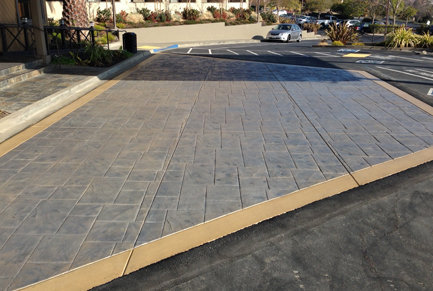A1 Professional Asphalt & Sealing Llc Fundamentals Explained
A1 Professional Asphalt & Sealing Llc Fundamentals Explained
Blog Article
Rumored Buzz on A1 Professional Asphalt & Sealing Llc
Table of ContentsUnknown Facts About A1 Professional Asphalt & Sealing LlcFacts About A1 Professional Asphalt & Sealing Llc RevealedA Biased View of A1 Professional Asphalt & Sealing LlcEverything about A1 Professional Asphalt & Sealing LlcThe Main Principles Of A1 Professional Asphalt & Sealing Llc

The oil in a cars and truck engine is not just oil. It consists of a range of additives to boost the car's efficiency. These include polymers, thickness modifiers, heat stabilizers, added lubes, and put on additives. The REOB contains all the additives that remained in the waste oil along with the wear metals from the engine (primarily iron and copper).
However, by making lots of blends making use of different REOB samples and different asphalt binders, the variants largely can be averaged out. Numerous States gave examples of well-known REOB composition to TFHRC researchers, that evaluated the examples to compare the portion of added (recognized) REOB to the located (checked) quantity. The evaluations revealed an equivalent percent of added and found REOB.
A1 Professional Asphalt & Sealing Llc for Beginners
They received a frustrating action. The TFHRC scientists analyzed 1,532 examples from 40 States, one Canadian province, and 2 Government Lands Highway departments. They assessed each sample twiceamounting to more than 3,000 evaluations. None of those States recognized that the asphalt they were buying had REOB. One State urged its samples had no REOB.
Of the 1,532 samples evaluated, 12 percent consisted of REOB, and some contained significantly high degrees of it at 1020 percent. The highest possible level was 34 percent in an example from Texas, which TxDOT had utilized in a patching substance. This testing additionally exposed the existence of phosphoric acid in 11 percent of the examples, and 2 percent contained ground tire rubber.
Two years ago at TRB's yearly conference, the Federal researchers held an REOB workshop and presented the searchings for of their lab analyses to a standing room-only crowd. Although some agencies do not especially outlaw REOB, they do enforce physical tests that avert its useeffectively a ban. what is cold mix asphalt. Others do not ban it by specification, yet have arrangements with asphalt suppliers to avoid making use of REOB
A1 Professional Asphalt & Sealing Llc Fundamentals Explained
A handful do allow REOB, some within particular limitations. Ohio and Texas restriction degrees to less than 5 percent of the asphalt. To develop a reputable examination approach that all States can make use of, the TFHRC researchers set up a round-robin examination strategy. The participants are 11 State highway companies (Illinois, Massachusetts, Minnesota, Mississippi, Montana, North Carolina, Oklahoma, South Carolina, Texas, Vermont, and Wyoming), 2 independent screening labs, the Ministry of Transport in Ontario, Queen's College in Ontario, and an Ontario paving specialist.
In total, the scientists prepared and shipped 720 blends. The participants are examining the samples independently utilizing the standards supplied by the TFHRC researchers. The round-robin testing is nearly finished, and TFHRC remains in the process of collecting the results. The result the original source will certainly be a recommended AASHTO examination technique that any State can adopt and make use of (asphalt repairs).
The pavement with REOB, which is located 0.6 mile (1 kilometer) from the pavement without REOB, has identical subgrade, traffic density, and climate. The segment of Highway655 with 5 to 10 percent REOB revealed considerable breaking. In this instance, the presence of REOB was the determined source of breaking at a low temperature levels.
"In our experience in copyright, also little amounts of 23 percent can be an issue." An area of test sidewalk in Minnesota (MN1-4) located to contain REOB likewise broke too soon. The pavement done well for the initial 3 to 4 years, however after that began to break. This sidewalk is also subject to reduced temperatures.
The Best Guide To A1 Professional Asphalt & Sealing Llc
The examinations were not extensive, but they showed that at degrees of 6 percent or even more, the tensile stamina of the asphalt went down dramatically. At a degree of 3.5 percent REOB, the variation in the physical test techniques was higher than the impact of REOB. It was hard for researchers to examine whether REOB was present. http://tupalo.com/en/users/6576607.

One binder parameter thought about is the difference in between the low temperature level crucial specification temperature level for tightness (S) in the bending beam rheometer and the flexing light beam rheometer creep incline (m-value) noted as Tcritical. Two independent study teams, one from AASHTO and the other from the Asphalt Institute, concluded that more study is required on the use of REOB in asphalt.
Previously, all asphalt screening determined engineering residential properties such as stiffness. These examinations do not show what products had been contributed to the asphalt. One example gotten during the TFHRC research study had a very weird evaluation. The example had the following test results: Superpave PG 64-28 with a heat grade of 67.3 Tcritical on the flexing beam rheometer was 6.7 levels Celsius.

A1 Professional Asphalt & Sealing Llc Fundamentals Explained
These outcomes show there are weak points in the standard engineering testing protocols that might be manipulated. The manufacturer might have an economic benefit and the item passes all the standard examinations, however the product may not be advantageous to guaranteeing long-term efficiency. To address this issue and the expansion of brand-new asphalt additives and extenders, TFHRC is starting a research program to make use of portable spectroscopic devices, x-ray fluorescence spectroscopy, and Fourier change infrared spectroscopy to make it possible for evaluations to be done in the area instead than having to take samples back to the laboratory.
Report this page